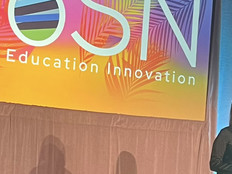How Do Technology and Professional Development Shape Student Performance?
In my nearly 40 years of working in education — many of them for schools in rural Wyoming and Missouri — I have come to respect the expression, "You can't get there from here."
When I asked for help finding my way to some remote community I'd never visited, I often encountered that very phrase, followed by directions that were defined by time rather than distance: "Follow that first road north of town for about an hour — unless it's raining, and then it could be longer. Turn when you see the old cement bridge, and it's another half hour, unless the Joneses are moving their herd, which could slow you down further. … "
The parallels between trying to get to an isolated community and trying to help teachers in those communities leverage technology in the classroom are striking. The roadmap is no less confusing and just as time-consuming. Beyond simply getting the technologies installed and functional in rural classrooms, providing the professional development that supports teachers along their journey can be challenging.
Road Scholars
In an effort to develop a better map for improving student performance, the eMINTS National Center at the University of Missouri — in collaboration with the American Institutes for Research, CDW•G and other industry partners — is conducting a three-year study of the impact of our professional development programs on teachers and students in 58 high-need rural Missouri districts.
The districts have been divided into three research groups. Two groups are receiving the full suite of eMINTS–recommended hardware and software, along with two to three years of PD. The third group, the "control" group, is providing teacher and student data for comparison with the two "experimental" groups. (Control group districts will receive eMINTS equipment and PD when the project ends after the 2014–2015 school year.)
A key benchmark for ensuring that PD helps teachers arrive at their desired destination of improved student performance is the allocation of a precious resource: time. Research has shown that the amount of time teachers spend engaged in their own learning helps determine PD's effectiveness.
Just as crucial is providing teachers with geographic information system–type support in the form of in-class coaching to guide them as they change how they teach using technology. At eMINTS, we use Art Costa and Bob Garmston's Cognitive Coaching methodology to help teachers with lesson planning and reflection on practice.
With experienced travel guides and strong positive findings on our side, eMINTS and its research partners hope to demonstrate why intensive professional development, paired with in-classroom coaching, is so important in maximizing the use of technology to improve learning outcomes for students. Thousands of Missouri seventh- and eighth-grade students and their teachers have embarked on a journey to help us truly understand how to "get there from here."
What we learn from the study has the potential to affect how administrators, parents, school board members and teachers perceive and make funding decisions about technology, the value of PD and how both ultimately impact the classroom.
Fresh Take
Founded in 1999, the eMINTS National Center at the University of Missouri in Columbia provides research-based comprehensive professional development programs to educators. The nonprofit organization, whose moniker stands for "enhancing Missouri's Instructional Networked Teaching Strategies," helps teachers integrate technology into their pedagogy using interactive group sessions and in-classroom coaching and mentoring. Students in more than 3,500 classrooms around the United States have benefitted from its instructional model.






